
Mike Kelley, Infinite Expansion
‘Everything is pronounced […]; everything is word, yet the word is itself no longer anything but the appearance of what has disappeared–the imaginary, the incessant, and the interminable.’
– Maurice Blanchot, The Space of Literature
In 2020, art writer Sabrina Tarasoff created the “Beyond Baroque” installation for the Huntington Library and Gardens and the Hammer Museum in Los Angeles. This walk-through haunted house reimagined the work of poets and artists who emerged in the 1980s from Beyond Baroque Literary/Arts Center in Venice, California. Among the writers Tarasoff included was Jack Skelley. The two of them had not met prior to 2020 but immediately found themselves exploring many mutual obsessions, launching a conversation via email and other media. Their projects include Tarasoff writing the Afterword to Skelley’s Semiotext(e) novel, The Complete Fear of Kathy Acker (2023), and Jack contributing the Introduction to Fun to Be Dead: The Complete Poetry of Bob Flanagan, edited by Tarasoff and publishing early 2024 (Kristina Kite Gallery and Pep Talk). Those books are just their more high-profile dialogues. Here are some recent parts of that infinitude.

“Beyond Baroque” by Sabrina Tarasoff, punk rock hallway

Dodger Stadium, flooded
Sabrina Tarasoff: The invitation to ‘stage’ this conversation came to us around June, when I was at the brink of turning 32, and thinking deeply into this age as metonymic for self-imposed exile. After all, (I think) 32 was when Emily Dickinson experienced her famed ‘terror,’ decided to heel-toe back home, become a recluse, and started corresponding with the world outside almost exclusively through her poetic epistles. I figured epistolary exile was an excellent place to begin this conversation, given that most of our relationship has been shaped through a seemingly infinite literary exchange – writ and scripted across, through, and beyond various more-or-less ‘real’ encounters with states and spaces of isolation: all from actual letters, to the haunted houses, dark rides, acid trips, Space Mountains, Dodger Stadiums, and Blake-an brain-bubbles present in your poetic works, to the various lockdowns, the sometimes head-splitting situation of writing, shared thoughts on stuckness, and ride breakdowns, per mind-melting inner experiences, like being under the influence, or falling in love, and so finding oneself trapped in the Idiot Bliss of what Dickinson called a ‘soft prison:’ “Incarceration — Home.” For Dickinson, the envelope expedited an idea of exchange, correspondence, and difference, like all those dashes, the caesura, and so on. The folds of paper were folding, as it were, or caching, thought into, through and beyond the space of the line. The poem’s vital élan – the line’s coming to life – depended on the envelope as an architecture, on par with the animation frame – her prison ‘cel.’ In Fear of Kathy Acker (FOKA), the protagonist-Jack surfs the TV-Infinite inside his head only to experience a kind of psy-fi entrapment inside the soft power prison of mass-media as it blurs with the reel of thoughts spilling from the inside. He is trying to correspond with the world outside of his mind’s making – if it even exists. Protagonist-Jack seeks proof of thought in its conversion to line, and so looks at all from Disneyland to William Blake to Endora (from TV’s Bewitched) to find the correct frame to carry an inner experience outside itself. I have never asked you, I think, who the addressee is in your work? I realized in writing this that I have always assumed it was “the Universe,” but, I’m not sure that’s true, and besides, what does that even mean? Granted, he is screaming into the void – as analogous to eternity, the infinite, the everything…

Idiot Bliss postcard
And this, notably, per my chosen title, from Maurice Blanchot, Lord of Everything-at-its-Limit: Everything pronounced, everything as word, and word as nothing but semblance of the real, un-reeling under language. Blanchot would perhaps note that the ‘principle obstacle,’ the thing that keeps us limited in life, is the ‘bad interiority which is our own.’ He also notes that this ‘bad interiority’ “can, from the imprisoning or banishing power which it was, become the power of welcome and adherence: no longer that which separates us from real things, but that which restores them to us at the point where they escape divisible space and enter the essential extension.” Alas, protagonist-Jack is imprisoned in his own bad interiority, a mind sent into self-imposed exile, banished by acid and heartache, but he welcomes the division, because the division is what turns one’s attention to the limits of the real as something in an ambiguous relation to language, and so suggests that it is only in the conversion of consciousness, the turning of thought away from language, the real world, that there may be hope to rediscover its romance. There may be hope, that is, to reorient ourselves towards the ‘everything’ that sinks, and disappears into the depths of the word: “the imaginary, the incessant, the interminable.” So, turning back to the addressee question, who are the many ‘you’s’ inside protagonist-Jack’s romantic call to arms?
Jack Skelley: Wow, Sabrina! Primo riffing and insights! Yes, for sure. We got good “e-Pistol Larry” layers of communication that often sync our inner Emilies. You know, I did love the idea of naming your new Instagram handle Emily Dickhead. (But, 666_Flags is perfect.) To address your question, and the literary letter folded neatly there: Who is the addressee in Fear of Kathy Acker? Let this be the Nth time I am stunned by your Tarasoffian empath powers applied to lit and art shit. For it’s both fun and instructive to consider now who I was addressing decades ago when writing the FOKA text! And how these addressees have morphed. Weirdo book was born in a near-subconscious gush. And now you got me recalling the different “you”s among its free-range pronouns. There’s a section where the narrator straight-up reaches from the page to beseech: “Oh, reader, oh listener.” This paralytic self-consciousness (as you say, “psy-fi” stuckness) is overly aware of a watchful audience (one of my Blanchotian “bad interiorities”?). Then there’s the very last line: “You’re still there, right?” This “you” are his friends. He cleaves to them. And today I count them (old and new) dear than ever. In the surge of 1980s materialism, he panics: Which of them will drown next in the market-driven & media-administered oppression? (Today we call this TikTok.) Then there are the full-on bummer parts including The “Carousel of Love and Suicide,” where there is “no escape from perceiving.” That passage addresses Dear Marci. I fell in love with her pessimism and jagged features. For the record, among the whirlwind of girlfriends there was no “real” Marci. She was a composite character in crisis. This probably means she is a stand-in for the Jack you dissect above: Desperately testing, reeling and unRealing among the slippery plasticity of celebs, freeways, rides, psychedelics, TV, sex and sex dreams that collage his consciousness. So, yeps, I guess I was talking to myself as a projection of this or that troubled yet entrancing girlfriend. It’s a mode. (Today we call this the “sad-girl” novel.)

Fear of Kathy Acker
Sabrina: I’ll gloss the sad girl comment, as this cuts deeper. Instead, one could, should sentence protagonist-Jack to Dickinson’s prison under Hegel’s “Law of the Heart,” on the basis of this frenzy of self-conceit qua the chase of “individual, essential reality.” But to avoid having to circumscribe the Phenomenology for the purposes of our writerly jib-jab, I suspect the safest short-cut is to instead ask you about the notion of ‘home.’ Not so much Los Angeles, but ‘home’ as analogical to inner space: where the heart is, or where the haunts are? Since in essence we’re riffing on the mental imprisonment of being inside language, here’s one for you from Ludwig Wittgenstein; he writes: “A man will be imprisoned in a room with a door that’s unlocked and opens inwards; as long as it does not occur to him to pull rather than push.” Elsewhere, Wittgenstein also writes: “When you are philosophizing, you have to descend into primeval chaos, and feel at home there.” I see protagonist-Jack as more or less perma-trapped somewhere between Dickinson’s soft prison, Hegel’s Law of the Heart, Wittgenstein’s man trapped in his own stupidity, and the primeval chaos of language as ‘home.’ Indulge my digressive drift, and talk to me about poetic brain-traps, being stuck inside the word?
Jack: Hey, are you saying I’m trapped in my own stupidity! Bingo. Idiot Bliss. Actually, before we plunge into the primeval prison permafrost, let me announce that my current “digestive drifts” are leftover Halloween Snickers and Peanut M&Ms. I know you like candy. Anywayz, yes, I tend to get obsessively stuck, as you know, in the gooey mind glue of Sex/Romance bla bla bla. It’s all too warm a home, too sticky a sugar.
And I remain stuck on poetic “theoreeze” that posit romance as a mass glorification/rationalization of desire. These new writings of mine (many Frankensteined from others’ texts) are “seeking proof” (as you say above about FOKA-Jack) of their own “realness” as sought objects. Symbolicially they are embodied by magnificent & magnetic “cuties.” A girliverse. In this new book (working title: Myth Lab), consciousness and creation tend toward a sexual concrescence; an eschatology of eros. But the even deeper Primeval goo, it seems, and the one that warps & wraps all that desire, like La Brea Tar Pits, is language. It’s both T-Rex and Stegosaurus battling in Disneyland’s Primeval World diorama. Language and its prosthetics bubble-up pretty much everything there is, culture wise, including manufactured desire. Don’t you think? Anyway, my “theoreeze” mimic that theory of language by performing botched surgeries upon words… Semantic monsters, if you will. What would Wittgenstein say?

Mr. Toad’s Wild Ride Arbiter
Sabrina: Yes! Aren’t all the best minds trapped in their own stupidity? Stupidity is essential – for repetition, bliss, happiness, forgetting what you know, or what you think you should know, and so on. Or, convincing yourself of the value of what’s clearly nonsense. You know, Wittgenstein repeats, over and over again, in five separate and crucial moments of his career, that “to imagine a language is to imagine a form of life.” Just for the record, Wittgenstein’s ‘form of life’ also comes up in Stephen Fjellman’s tract on Walt Disney World, Vinyl Leaves, in which Mickey’s introduced to Ludwig under the aegis of commodified ‘forms of life,’ but also goes to show how WDW has been intently Imagineered in alternate forms of language – thought finding form in motion mechanics, pace, animated lines drawn out as ‘life,’ and in the whole ordeal of world-building in the thrill of possibility – per the ‘everything.’ That is, language is all infinite fun and games until the existential line drawn descends you into the primeval hell in your head. Language traps, as much as it liberates. I love mind-riding Disney attractions with Wittgenstein. He would have loved Mr. Toad’s Wild Ride, for example, as the central conceits of the ride are all there, in the Tractatus, in the Grundrisse, the Investigations – the game, the drift, the sentence (as judgment and line), the trap, the philological hell. Notably, Mr. Toad’s drunken dérive depends on his mode of transport – the automobile as narrative device. What I am getting at, slowly, is the form of life found in the movement of thought into language, which tracks with the 4ever-shifting semantic goalposts of your poetic works, now, as much as the early stuff. Your poetic cosmos is set-up, I think, in transports that frame alternate forms of language, like rides, desires, views, attractions – and so life, no? I am thinking about Space Mountain, LSD, cars stuck on the Freeway, playing ball, cartoons, television. What kind of ‘forms of life’ do your lines imagine? What kind of languages?
Jack: Thanks for the rabbit hole of Stephen Fjellman on Walt Disney World, Vinyl Leaves. I see there’s a chapter on the “Psychology of Trash Removal.” (LOL) As for your Wittgenstein stuff, (and I didn’t know about his tracts and investigations, but yes: Disney’s Toad ends up guilty in goofy cartoon hell), and transport – in the largest sense – is a Top 5 metaphor methinks. In all varieties you mention and more. Let’s see: A dark ride is a subconscious channel. There’s labyrinths, funhouses, chasms, tunnels and caves, plus freeways, which are “archetypical” (as opposed to archetypal) versions: typically mundane & ironic mutations of classical symbols. Plus vaginas, buttholes and mouths. Most dreams. Can’t forget the carnal rides & emotional orbits of sex itself. In a parallel sense, you have your tart/sweet “Tunnel of Love” series of image/concepts! So, of course, love is an ultimate transporter (which I previously itemized as “romance.”) The list goes on. Also in my new manuscript I’m dwelling on the prosthetics of organs, implants, transexual transformations, and extreme neurodiversity as perfections/perversions of the whole human species. (!!) That’s the ride of evolution itself. (BTW, re: theme-park mechanics – for sure an elaborate proxy or compression of language – we should soon discuss the Disney Omnimover and its laser-narrative function.

Interstellar Theme Park
Sabrina: If I look back at your 1982 volume, Monsters, it occurs to me that most of the poetic set-ups involve some similar feat of miniaturization that leads to an experience of an irruptive present, per the very image of the American sublime. It makes me think of something Svetlana Boym wrote in her brilliant book, The Future of Nostalgia, on Jurassic Park: “From miniature fragment comes total reanimation of the extinct creature; the beauty of miniature is destroyed for the creation of the gigantic theater of the sublime.” From fossil fragment to Universal’s VelociCoaster. The thrill of discovery. Poems of yours like Planet of Toys, Juvenile Loitering, Helium Kid in Space Mountain, or any of the miniature Disneyland ride poems, which were recently reprinted in your brain-melting selected works, Interstellar Theme Park, do something very similar, no? The space that frames the line (of flight, desire, thought) atomizes inner experience, thought, and so provides a limit, within which the notion of illimitation can flourish. Think Poetics of Space, but, in your case: The Poetics of Space Mountain. Let’s talk about feats of atomization for a while – per the ride, the mini-worlds, mini-selves, toys, kids? Per Henri Bergson’s atomic experiences of time? Did you see the promos for Universals’ Epic Universe? I mean, you enter through a portal called The Chronos, into a cosmos-themed-world, Celestial Park, which, per the CEO: “puts the park back in theme park.” The Universe inside a World that’s actually a park. That’s atomization par excellence. What would Bergson say?

VelociCoaster
Jack: I get this miniaturization stuff. The poems you cite are mini windup toy worlds where brain gears whirr and emotion valves vent. “Gigantic theater of the sublime” makes me think of Radiator Springs Racers’ panoramic setting in a 3D fake Monument Valley . (My racer once broke down in there and we were flashlighted past the Potemkin sets into daylight!) It’s a replica simulacrum thing but large-scale.

Space Mountain model
Also – and this is hard to express – but it feels related to a certain recurring acid hallucination: a spacial sensation in which thoughts diamond down to metalized densities and atomized tunnel-vision. (HUH?) It feels weirdly wired. Sometimes with kaleido-fractal mandalas. I can get a similar sensation when slipping into dreams, and their transporter power.
In Monsters, “Planet of Toys” is a mechanical world that is frozen until a hot-to-trot snow-bunny teen rides a steamy “Mister Machine,” who makes her “wet at the bottom.” (Nudge, nudge.) And the ode “To Marie Osmond” pictures “an ancient city of soft buildings which transubstantiate and interpenetrate in moon-aluminum evening” queened by the sexual force of doll-regal super-plastic Marie. My new book has a “theory” called “The Clown Dimensions of Uncanny Valley,” that proves the un-possible: Terence McKenna’s “merry self-transforming machine elves… part goofy mimes/part visual memes” foresee DMT plasticity of imagination. Is this miniaturization human or alien?

The Chronos, Epic Universe
Sabrina: For readerly context, Monsters was released by Little Caesar Press in 1982. It contains my favorite poem ever – “Helium Kid on Space Mountain”, which you graciously dedicated to me in the reprint. (Thank you thank you thank you.) “Helium Kid“ is so great, in part because it carries us straight into the poetics of the ride, as philosophical toy, a term I am stealing from Jonathan Crary, and so straight into the very Ludwig-Meet-Mickey core of your poetic universe. It proposes Space Mountain’s enclosed stage as a site for potential mind-expansion that edges the ‘perilous’ limit, that crucial point of return, by bringing us to the moment when the ride breaks down and real life comes rushing in. The reader is moved straight into the anxious threshold that tears open ecstatic momentum as the roller coaster comes to an abrupt halt, and, with it, so does the seemingly limitless motion of helium kid’s day-dreamy drift. The poem rushes through the twists and bends of this “science fiction city,” “taking that last turn speeding down / through total black to hit a thousand white / explosions,” only to reach the end of its course with the sudden onset of spatial anxiety. A flashlight is shone on the kid’s rumination: the ride malfunctions midway through the poem to shift emphasis from the imagined space to the studio building. In other words, the poem grabs a fast-pass (RIP) into some version of a Bachelardian imaginary place, and turns it into an anxiety dream. It drifts, and screeches to a halt. The sudden stop at the center of the poem is still not an end, but another beginning, which allows for the poem to carry on, recursively, much like the inverse-narrative of Pirates of the Caribbean in its clever use of the grand finale as the ride’s opening act. Looping, 4ever. Idiot Bliss in repetition. The form of the ride provides a form for a poetic language: a round, like the medieval rondelle. By the time that the helium kid opens his eyes to “dark wind,” he again has the “whole car to himself,” and so on, and so on, forever reenacting the single, animatronic moment of his break-down. Is it real or in his mind? Is he stoned? Either way, repetition ferries into the mind’s tropic zone, where the mechanism of the ride is reverse-Imagineered as a figurative model for thought. The Poetics of your Space Mountain is written in the image of the ride as language, as thought – the kid loses track of what is inside the mind and what’s happening on the ride. It’s perfect. So, tell me. Is Monsters about developing ‘monster’ languages, i.e., Imagineering the poetic form, and its place in discourse?

Pirates of the Caribbean map

Norman Klein. Pirates on acid.
Jack: Yes. It smells like teen spirit forms of life. … I’ll get to your question (I hope), but firstly, I thank YOU for placing my Space Mountain sonnet atop the Tarasoff Olympus of verse! Secondly, I want to double-back on the Dickinson haunted-home theme. I see from your Instagram Halloween ghost post that “haunt” and “home” are etymological cousins. And that ghosts’ homes are haunted houses. There’s a favorite Roky Erickson (psychedelic rocker) song, “If You Have Ghosts (You Have Everything).” This syllogisms (jisms) the all-encompassing (infinite) span of the concept. I think. Fluid/glitch (your recurring concept of “motion blur”) is a dominant mode. I love glitchy, electronic art! In its spurts and fritzes it “loses track” of its narrative trajectory, making the maze more deliciously amazing.

Omnimover vehicles
Sabrina: Words are all haunted, no? Dickinson once wrote something, like, “Nature is a haunted house—Art, a house that wants to be haunted.” I kind of like that idea: the reverse haunting, haunting what haunts. (I’m stealing that from something Mike Kelley wrote on Cameron Jamie.) But, from one invisible to another, while obsessing about Space Mountain’s airtight illusion and the verse’s looping structure, another question arose: What about “Helium Kid”? I know that the title came from the original band name for Brit rockers XTC, but I love the language game, so could we think into the ‘helium’ as the airtight, deoxygenated space of your verse? In the life of the kid’s mind: Everything is dense, ballooning – expanding, and going Pop! Hubba-Bubba Blown-up emotions, and dizzied metaphors. Ideas spun like Cotton Candy until all is sickly sweet. Sugar highs and candy-crushed comedowns. Candy-coated kisses: a mutual idée fixe. Alas: if we glean that the secret subject here is being under the influence, what happens to the verse under the cast member’s bright flashlight? “Bring on the black,” the poem reads, as if the dark ride’s unlit fantasy space was safer than what could be witnessed under the light of the real. Is a flashlight shone on his rumination in order to contemplate where the imaginative rubs up against the real? Do I need to get my Lacan out – on the ineffable, mysterious core of experience that we could call the ‘Real’?
Jack: Hmmm. Today, inside, I’m still the kid on that ride, high on his own mental supply; freaked-out on the daily spectacle of his alienation. It shakes him like a jerky coaster disrupted, spot-lighting his own mind-ride: Crackling with libido-ized insecurities, mistakes, cringes. Then he (me) reverses course and reverts to hard-charging Aries ego, propelling himself in search of love, success, sucksex, attention and other gratifications. So I effing love your 437-word explication of my 115-word “Helium Kid” sonnet. To what you say about ride-as-language (at root as human consciousness) I’d chime this: He’s the Helium Kid because his adolescent voice is breaking, as if inhaling that gas, just as his mind-ride is braking…. Just as my heart-ride suffers disruptions, juvenile eruptions “acting out” on ero-romantic impulses persisting deep into my “maturity.” Note to future critics and historians (that will be mostly you, Sabrina): Your mention of “candy-coated kisses” points to variations on the phrase “candy-coated” relooping in both your and my texts (poems, essays, letters) over the past 3 years. Idée fixation.

Monsanto Adventure Thru Inner Space snowflake
Sabrina: Another refrain that loops in my mind these days is: “Congratulations, everything,” from a Bob Flanagan’s poem in his 1982 Wedding of Everything. This celebratory psychic space rings true to our conversation, as we’ve been writing under the aegis of the eternal, the all-encompassing, and as it occurs to me that nothing quite sums up our correspondences than a mutual investment in the cosmic totality of all things, all that exists, or threatens to, that is, all matter, energy, and momentum, time/space mindfucks and crummy wormholes inclus, that both of us have committed to candy-crush and/or court through a lifetime of lines tracking the unattainable ‘all’ as if it were a concept Monsanto had invented for Adventure Thru Inner Space. That is, we both put a lot of stock into delightfully stoned ideas, such as… the idea that suspended in the Omnimover’s scopic spin, controlling perception, and so a kind of experience, we are moved to see ‘everything’: in all potential directions, perchance dimensions, as if at the limits of experience, per being ‘moved’: read: to tears—at the beauty of ‘everything,’ all the details of the ride, the sublime machinations, the perfect harmony of all possible end-game FX going off at once. Capturing ‘everything’ as a sequence of details caught in the duration of the drift, pure instants of the real reformatted as reel, also draws attention to the core impossibility of courting a/the whole: the very contours of the show building suggest a limit approached, but never reached. Still, somehow, miraculously: ‘everything’ tends to expand from the cracks of experience: pauses, gaps, silences, stalls, spins, even malfunctions—limiting factors, like lines: of thought, desire, per spaces of meaning, whether stacked as verse, or corralled in the ride queue. One must think of all that’s imagined as real, actual. Infinite in its potential: bouncing off the walls. Bachelard speaks about ‘reading a room.’

Hollis Frampton, Snowflake
Jack: Your Bob Flanagan quote jabs me back to your recent IG post of Percy Shelley’s “Mt Blanc.” Shelley’s opening line: “The everlasting universe of things flows through the mind.” And all those mindgasmed cosms you list fit snug in our shared omnimover adventure. So thank you for establishing here the omnimover as a signifying & story-directing phenomenon.

Monsanto Adventure Thru Inner Space, promo
You know better than anyone how in Fear of Kathy Acker (FOKA) the Monsanto-sponsored, omnimover-directed ride spins into the culminating LIFE SIZE VIDEO DREAM CAVE WHATEVER section. Somehow, this “crummy wormhole,” including its vaginal associations, is where the first-person narrator’s passive perception flip/mirrors to active creation, self-individuating his “soul,” Junglike (perhaps psychoanalytically accounting for your “moved to tears”), and transcending his crises of sexuality and identity, not unlike your yummy Julia Kristeva bit. If my “novel” has a “plot” that is its “climax.”
Sabrina: Right, you bring us inside, the cave, the brain, the snowflake. The dark ride is writ in the penumbra of the intimate experience, like desire, or love: an abyss, which Barthes notably described as a “non-site.” (And, if you’re wondering: no, I won’t rest until all of philosophy’s on the ride with me; then we start civilization anew aboard something akin to the Kairos. ‘Theory’ is a theme park par excellence. Thought/Momentum: “The ride never ends.”) Back to the point: desire, intimacy, hearts beating hard, boys getting hard, the lawlessness of love—the full spectrum of emotion f/x is Cor Cordium of your spectacle. I’ve asked about the addressee, but what of the site of the lyric? I have vested myself in tropic zones as of late, as lodged within non-places, imaginary sites, scripted spots profuse with metaphor. Turning, over-turning. Turning heads. Eons ago, I’d mentioned a constellation of asteroids called the Amor group, with one particular rock in mind: the 433 Eros—the second largest Near-Earth object, and the first one to receive a masculine name, due to what Astronomers call its “eccentric orbit” between Mars and Earth. Apropos horny, masculine orbits, Jack, I have to ask: is the 433 Eros your home planet, i.e., where your lyric lives? Whizzing through space, full of impact-potential, threatening to demolish ‘everything’ with its Interstellar Love Fx? I would like to imagine a Sci-Fi disaster flick, in which the Eros Asteroid is headed to destroy Earth. That could be a Jack Skelley poem, come to think of it. Interstellar Love Rox!

The Kairos
Jack: Eros Asteroids!!!! Goddammit, Sabrina. Would you please stop musing me? I’m trying to complete my new manuscript, but you throw symbols like erotic space orbits at me and I’m inspired to add them to chapters such as “Cuties of the Universe,” or “Rendezvous with God-MILF.” These texts are Sci-Fi disaster epic-adjacent. They look into a star-faring evolutionary future that may end either in planetary (and species) destruction (caused by fucked-up male, military, marketed, monotheist techno-fascism, forever colonizing minds, terrorizing Palestinians and indigenous cultures worldwide), or in a pan-sexual transcendence and liberation. The former looms closer daily, it seems. But the latter gives me horny hope for a home planet of desire, intimacy, hearts beating hard, boys getting asteroid-rock hard, girls getting off, the lawlessness of love, girls and boys, boys and boys, girl boys and boy girls and women blessed and possessed of transcendentally fierce erotic imaginations… they spin in everyone’s inner space, I think. Or so I believe, given my trust that it’s all a divine comedy.
I direct you to that article in Los Angeles Review of Books wherein young queer editor of SPASM magazine (Zoey Greenwald) stated that I “write like a woman?” I think Zoey says that queer writing wants to be as freely, expressively horny as FOKA Jack. And I want all writing to embrace limitless libido! In the erotics of cultural production, Écriture Féminine is a porous portal to the stars.

Kairos 2
Sabrina: Still, I wonder: what il-limits the libido? Eros collides love/desire, and draws us towards an outside—of ourselves, our subjectivity. Closer to the other, and so our own otherness. That limit is interesting: where the “I” dissolves into the attractive void. Think Rimbaud: Captain Maudit on the high seas of poesy, sinking with his ship. Or, Blake on Milton, confirming our suspicion “That every thing has its/Own vortex.” (Every thing!) Or, you know, Foucault, in his essay on Blanchot, writes that “attraction is no doubt for Blanchot what desire is for Sade, force for Nietzsche, the materiality of thought for Artaud, and transgression for Bataille: the pure, most naked experience of the outside.” The point is, if horniness is FOKA-Jack’s vortex, where does it lead? A defense, reinvention of love? I just ordered Byung-Chul Han’s The Agony of Eros; the book’s description is promising: “For Han, love requires the courage to accept self-negation for the sake of discovering the Other.” So, something about desubjectification haunts FOKA Jack’s libido. He’s grasping at cuties somewhere in language’s outer space. Oh! I almost forgot. Eros 433, by the way, was adapted into a sci-fi disaster, as it turns out. There’s an episode of The Expanse, in which a ‘catastrophic science experiment’ is conducted upon a population living inside tunnels cut through Eros. The Tunnel of Love-dwellers meet their demise as the asteroid mysteriously breaks orbit and crashes into Venus. I considered watching it, but have a feeling that this material is best left to our imaginations, which is to say: use the material, put it into your new manuscript! Everything is swallowed into the infinite confab; it is always a pleasure seeing snippets of ideas we have shared spill into our respective works, no? That’s the locus of real, critical discourse: a place where ‘Everything’ unfolds elsewhere (in loops of time, repeat visits to astral bodies, poetic fx, rides). That is, in sequences and likenesses of detail that recur—or, unfurl as a set of destinations made of attractions grouped through dissolves, apparitions, disappearances, metamorphoses: motion tricks, from mind to material. It is a matter of way-finding from my brain-maze to yours, and then somehow onto a page. Codes of reception are manipulated to expand what can be experienced in the mind’s eye, popping out of its single-socket: brain going booioinnggg! Anyhoo, back on track: modeled in Monsanto’s Inner Space is, to indulge, also a notion of Outer Space, because we are, in the Atomobile, going inside the water drop to peer into the contours of the form it seeks to approach—the snowflake. Snowflake POV: the controlled limit experience. Lacan has stuff to say about this, no doubt—both the impossibility of a “real” experience with a limit, and the quasi-masochistic enjoyment implied in the seeking itself. Objet petit FX. I keep thinking, if “cinema erases the city, on behalf of Artifice,” as Norman Klein has it, then the Omnimover, here, erases God, on behalf of ‘everything.’ What Omnimoves you to create?

Eros 433

Meteor coaster

Pardon our Dust
Jack: Tunnel of Love on Amor Group asteroid Eros to Venus. That’s the interplanetary theme park we hereby erect. Oh, the hawt expanse!! Let’s orbit back to that. Now, we add to the philosophers hopping on your taxonomy of rides (roller coasters vs. dark rides) – noting that our omnimover-as-symbol is distinct from its (random-but-I-love-it) linguistic relative – Aristotle’s Prime Mover. The primum movens is mental monad as “the initial cause.” In a genesis of telekinesis, mind motivates matter to make the first move. The clockmaker god who winds the universe and lets it spin so the old coot can take a nap. (Metaphorically begetting last century’s Big-Bang theories, don’t you think?) The 18th Century Deists/Rationalist’s adopt the “unmoved mover” as a desperate rationale for keeping “God” in the picture despite their own science negating centuries of religio mumbo jumbo. But it endures as ride vehicle for consciousness.

Heartspin

Eros Station
Prophesizing Monsanto Disney, Dante executes this somersault from ego to imagination amid a swirling snowstorm at the Inferno’s lowest point of creation – Satan’s scrotum – but suddenly inverts perspective into a Matterhorny mountaintop where “our atmosphere…sprinkles snowflakes downward with its frozen mists.” Now, instead of falling downward, matter becomes air, “snowflaking upward with triumphant mists that for a while had stayed with us there.”

Dante’s Purgatorio
Cosmo-personically, the crystalline spheres of enclosing heavens progressively shrink into one central-yet-encompassing mirror ball that motivates all others. In the Divina Commedia ride, Dante’s narrrator/guide Beatrice pilots a chariot. (In reference to our above convo about transport metaphors, William Blake, in his Purgatorio illustration, terms the Beatrice chariot a “car.”) Likewise, the Beatrice inside me directs the poet: Hey, climb into that Ominmover. That’s like the mind of God, “in which are kindled both/ the Love that turns it and the force it rains.” (Damn, that’s lovely, Dante!)

William Blake, Beatrice Addressing Dante From Her Car
Love can’t help but be inclusive of – or sparked by – sexuality. Satan’s cock “flips” into compassion but retains the momentum-urge of desire. Omnimover consciousness twirls gaze to sparkle iridescence into matter that dissolves. “The snowflake is melting!” proclaims Monsanto’s scientist-Beatrice. “My body drifts through matter like water,” says my stoned-but-alert FOKA narrator. And the Imagination activates his/her/their self-actualized MONSANTO VIDEO GAME DREAM CAVE PERCEPTION-CREATION VAGINA PORTAL TO ALL THINGS.
I declare all this as if I’m personally evolved enough to actuate it. What a joke! The truth is, decades after those FOKA apprehensions (in both senses: holding and fearing), I stay stuck in a hornier-than-ever hell – revolving mirror-ball mazes of yearning.
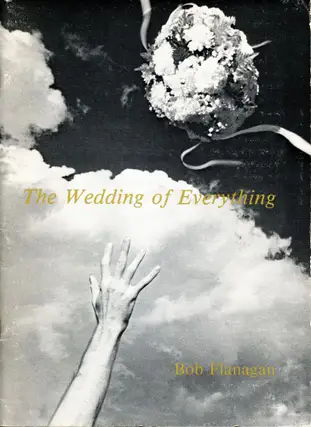
Bob Flanagan, The Wedding of Everything
Sabrina: I should mention that before digressing into my paean to Monsanto Inner Life, I’d wanted to chat about the ‘everything,’ more simply, because this notion of ‘everything’ (and by extension the everywhere and everyone) has lately become a kind of (dis)organizing principle to my everyday: an impossible measure against which the totality of my interactions, exchanges, and emotions have pushed to change my writing practice. I would say the ‘everything’ is the tropic zone that my spaced-out theory of language (or mind?) is attached to. ‘Everything’ as a temporal marker of psychic space: the psy-fi real. It has something to do with clocks and the present and the laying of imaginary lines around a certain mode of language production, which can turn the entire world upside-down, topsy-turvy – in the single turn, or screw, of a word’s meaning. Language games court ‘everything,’ and can thereby also dismantle ‘everything.’ In this, I am laboring to renegotiate the tropics of ‘everything,’ as a concept courting world-building, thinking of it – at least for our purposes – as a critical response to what Julia Kristeva called the crisis of psychic space. She calls out to occupants of interplanetary space, i.e., those still vested in love, to renegotiate the seeming split between interior and exterior words, and the rift it has led to in amatory discourses. (The chapter is called Extraterrestrials Suffering For Want of Love, which is not unrelated to either of our lives’ works.) To be clear, the ‘crisis’ is not exactly a negative one—not for me, nor Kristeva. She writes into the want for love on par with the want for new languages to speak love, to reinvest space with its imagined tongues, and so, on Wittgenstein’s terms, also with new forms of sociality. Her E.Ts seek to recuperate the Eros Asteroid’s delish/dark otherness, and do so, paradoxically, through renegotiating the concept of unity as connected with displacements, drift, wanderings. The tropics mark a “turn:” Kristeva’s ETs are phoning home to the 433 Eros, searching to return to their home in the Amor group, whirling through psychic space with desire’s hot momentum. I have never been to Universal in Florida, sadly, but I’m sure the E.T. Adventure ride relates, somehow.

Julia Kristeva, The Severed Head
Jack: Kristeva’s love allure gets back to your taxonomy of rides: “If the roller coaster’s an existential artyfact pushing sim-death as test of form,” as you state, then “the dark ride is formed after the gentle/spooky abyss of intimacy.” It seems there are two main versions of Omnimovers: Monsanto’s Adventure Thru Inner Space employs the “Atomobile” for its chem-geek Madison Avenue trip into the everything of the infinite-small, whereas Haunted Mansion dispatches “Doom Buggies” which plunge into just that Kristevian abyss of intimacy: centrally rendered in the (Edgar Allan) Poe-etic beating heart of the ride’s dead bride.
To stick with the Haunted Mansion for a sec, a female apparition named by imagineers Little Leota (as opposed to Madame Leota, who is the Endora-like disembodied crystal-ball medium) is draped in a gown-shroud. She is the ride’s final holo-vision, sing-song coaxing us to “hurry back” as we ascend the moving sidewalk from the Haunted Mansion crypt and return to New Orleans Square. (In Paris I believe it’s the Phantom Manor and Frontierland?) For some reason imagineers rendered this hologram 1/4 scale. Pervy me, I always found her pale-perfect face and doll-sized frame kind of hawt! Is this because she “imprinted” me when I first beheld her at the hormonal age of 13? And today, which fetish of mine doth this shimmering Goth Tinker Bell mini-cutie trill and thrill? Lacan’s masochistic “Objet petit FX,” flips to sadistic like a Pleasure Daddy to his Little Girl. (And I love how you warp Lacan’s greatest hits.)

Haunted Mansion, Little Leota
Sabrina: Quite possible that I would lose Kristeva’s support here, but I think the theme park reconciles, or compensates, for this foregone psychic space, as love’s lost domain, a long gone category of the spatial imagination. She means that emotionalism in the public domain is a love-bubble burst by the infinite regression of those impelled to seek satisfaction “only in intoxication (from drugs to sacred music, which do away with individuality and sex for the sake of infinity.)” These last lines, naturally, made me giggle, given that your entire project is exactly a drunken dérive through individuality and sex for the sake of infinity. (A Pervert’s Mr. Toad’s Wild Ride?) In Tales of Love, we peer into ‘the crisis,’ and gleam the problem as relative to the contextless profusion of media culture and social fragmentation; the image at core is Narcissus drowning “in a cascade of false images.” (Which, uh, makes me relatively sure that the ride, ET Adventure, wasn’t what she had in mind with a mention of extraterrestrials…. Oh, well, I’m too deep into this analysis now. This context of no context pushes the aching for love, which turns into a sense of ‘unbeing:’ and its discontents. That is, high time to find an analyst. The idea that gets all the airtime is that ‘the speaking being is a wounded being,’ but the crisis can be mobilized—as a work-in-progress. She writes: “Speaking, writing? Is that not again building “one’s own,” be it polyvalent? […] It will actualize the seeming, the imagination. For such an open undecidable psychic space, the crisis will not be a suffering, but a sign within a framework whose truth lies in its ability to absorb seemings. I speak in favor of imagination as an antidote for the crisis […] in favor of maturing powers and counter powers with imaginary constructions—phantasmic, daring, violent, critical, demanding, shy… Let them speak, the ET’s shall live.” The theme park mobilizes the crisis as a matter of pace, revolutions per minute, emotionalism heightened in shifting scales, and senses of un-being, as per being cast as other – as character, cartoon, trope – for the duration of the ride. The attraction stages a troping of site and self that returns us to the core emotionalism of motor-sensory being—through a swerve away from logic, a deviation from conventional language, towards an alternate way of marking, and so expressing experience. It moves us into, and through, a site profuse with the production of speechless meaning, which imagines, I think, feelings of liveliness that are increasingly alien to us (—or not us, as in you and I, but people less vested in the ride, you know… Normal people.) The ET zone ferries in transports of emotion. It’s a track made of joyful tears and Reese’s Pieces, and the promise that something of the animatronic core idea of emotion will always be there – to move us to discourse, tears, thought, pictures. An architecture of reassurance. And, in a sense, a paean to all those who’ve lost their sense of home, and for whom Hollywood has helped reconstruct one. Cinematic, scripted, animated, framed, fake—but what’s the difference? In other words, is Imagineering antidote to the crisis? Can the E.T. Animatronic please phone home? Speak, live?

ET Adventure
Jack: So now we’ve invited Aristotle, Dante/Beatrice, Jacques Lacan, CG Jung, Julia Kristeva, Norman Klein and Roland Barthes into our ride vehicle. Label them “foolosophers,” since we’re half-mocking them. But what about Jean Baudrillard? More than one of the arty podcasters who hosted me recently exclaimed Baudrillard’s Disneyland raps were sickass. You also DM’d me to the effect that you OD’d on Baudrillard during your CalArts days.
So, when you turn your thesis into your book (Fantasyworld) you can flesh-out this ride taxonomy. Roller Coaster, Dark Ride etc. Perhaps have one of your rad artist friends illustrate the Tarasoff-verse! A mandala/chart could model the classic circular maps of Disneyland: a mind-cycle of ride “modes,” morphing one to the next, and each paired with its respective “foolosopher.” Or poet!

Northrop Frye, cycle of the four Mythoi
I recently posted on IG this image: a coupling of a Disneyland map with literary theorist Northrop Frye’s cycle of the four mythoi – primary archetype lands – Comedy, Romance, Tragedy and Irony. As at D-land itself, it’s the thematic transitions between lands/modes that bewitch. The “shifting scales” you mention. That’s where they most reveal their “real” simulacra. E.g., how the mountains and music of Frontierland illogically “swerve” (your term) via tunnels into those of Star Wars: Galaxy’s Edge. And how (returning to your thrust) such attractions trope a “core emotionalism of being.” Thus I loves me some of that Kristeva Extraterrestrials Suffering For Want of Love stuff. Someone also recently turned me onto her Teresa My Love: The Imagined Life of the Saint of Avila, which is up several of my alleys. And I pilfered greedily from Kristeva’s The Severed Head for my oddball theory/story, “Walt Disney’s Head.” (CalArts’ own Norman Klein got a kick out of it when I presented it on the same bill with him at Stories Books and Cafe in Echo Park.) And your letter’s cosm-gasm references – accessing the self-actualized mental DREAM CAVE where imagination dissolves crisis—”phantasmic, daring, violent, critical, demanding, shy…?” – is total Kristeva. And – holy fuck – Kristeva is so close to Blake here! Somewhere else she points to “the mystical or spiritual crisis.” That is, the crisis that evolves from love and desire, by “points of the human experience which cannot be reduced to a political causality.”
This is exactly my “looping” crisis. The one formed of desire and its elaborate rationalization, “romance.” Politics, or perhaps the larger social order – language and culture – have their grubby hands in it as well. The “profusion of media culture and social fragmentation,” as you state, adds to a frenzied search for identity. You relate it to Narcissus drowning “in a cascade of false images” (pop culture). When joined with the crisis of romance, this calls to mind Bryan Ferry’s (Roxy Music) ode to carnal restlessness, “Mother of Pearl.”
—If you’re looking for love
—In a looking glass world
—It’s pretty hard to find

The Carpenters, Calling Occupants of Interplanetary Craft
Extra points for your invoking Karen Carpenter: Her hokey opus “Calling Occupants of Interplanetary Craft” may be mock-yearning but it reveals that ever un-resolving crisis: A want of love is longing for the other (Blake’s “Emanation”) in the inner galaxies of the self. This is how Romantics lit-crit Anahid Nersessian characterizes expressions of longing in Keats’ great Odes: “a strange compulsion to speak to those who aren’t there.” I love. I long. I constantly drop in deliciously stoopid and starry-eyed yearning. The Mighty Microscope of self-examination peers not into melting snowflakes, but salt-tart tears plopping in desire. Omnimoving obsessions with unending & ascending levels of bodily erotomania are grasping infatuations that cycle yet more ultimately unknowable heavenly object-subjects into my orbit. Pleasure Dom Daddy claims them with eternity collars. As “my body drifts through matter like water,” these “cuties” dissolve under man-gaze. Seems I learned few lessons, other than that I’m part beast/part Beatrice. Can’t help it. Kinda don’t want to.

Roky Erikson: If You Have Ghosts (You Have Everything)
Sabrina: In all honesty, the decision to ferry all of Western philosophy onto the ride is rather serious. It has occurred to me, more and more, that my Emily Dickinson age may, in fact, be more of a Maurice Blanchot-ey ‘turning-point.’ That is, there comes a point when Maurice just wanted to go outside — outside language, outside its proper use, and designated spaces; outside the strictures, as Michael Holland has noted, “upon the unacknowledged limits of what a given writer had said, a designation and denunciation of those limits for the closure they impose, through language, upon an experience that takes place entirely in language.” Alas, Blanchot wants to get out of the system, into a place outside language, which is still (perhaps) language; a language spoken by no one: the imaginary, the interminable, the incessant. So, to me, the ride imagines this alternate language, another form of life. The question is, how do these accounts of attraction, and the theme park attraction speak to each other, through mutual concerns on the movement of exteriority, limit experiences, the dispersion of the subject, and the folding of language into space? As concerns on the spatialization of desire, which I think you are well-tapped into.
You know, I had made myself a whole list of keywords to stick to, to keep myself on track, and work through – ranging from “E.T.” to trans-linguistic elves to baseball “pitches.” But, since your last note, I have been lost in an on-going essay about tropic language and attractions, and tropes, and so trying to learn about lines of latitude, wayfaring, cartographic cinema, charting invisibles in action, directive—all from Blanchot’s limit-experiences to Hollis Frampton’s (unfinished) Magellan project to Méliès’ crescent moon attractions to Wittgenstein’s ‘movements of thought.’ I have been thinking about lines of tropic, Disney’s Jungle Cruise ride, and Ludwig’s language-games. Swerving semantics. And, I still can’t stop thinking about those images of a flooded Dodger Stadium. All in an on-going effort to expand what you refer to as my taxonomy of ‘rides’. The Universal CEO said it best: “It’s about really giving people the opportunity to experience the full thrill of being alive.” Alas, I’ve lost track of our chat a bit. But, the ride coming to a halt, if nothing else, lets you discover the force of a beginning. Or, happiness, I read somewhere, hinges on forgetting the past, and accepting your new timezone. Our time is out of joint. So, let me stall by asking you a nice, simple interview question, like, what are you reading right now?

Eternity collar
Jack: The synapses are looping. The linguals are whirling. The Muzak is fritzing. The engine is stalling. The culture is popping. The cuties are twirling. The collars are clasping. The motion is flurrying. The Melville is mucking. The rabbits are holing. The love is tunneling. The self is melting. All only to be blown further off-course by new Tarasoffian allusions (e.g., Bas Jan Ader, who I see was lost at sea.) And then you Kaboom me with a new chunk of Blanchot! (Aptly titled The Infinite Conversation.) “Reading is ignorant” indeed! For I never “understand” Blanchot. I can only allow the koan-like lines to unravel the mind. In fact, I’m not “reading” anything these daze. Rather, I’m spectator-sporting texts. (Hyper) ventilating them (along with accounts of “real” sexual encounters) into my own texts. The book stack on my desk is Himalayan-high (layered with Colors by Andrew Beradini, Lovebug by Daisy Lafarge, and a biography of Ray Davies of The Kinks). But no sooner do I crack their spines than I rush to incorporate this or that passage into my present writing (including into my Myth Lab manuscript or THIS HERE EPISTOLARY HYPOTHESIS EPIC !) Tell me: How the hell does one “finish” writing a book anyway? Indeed, as you divined in your FOKA Afterword (afterparty, afterbirth), that text never is/was/will be “complete,” as it “writes itself into being” as a “theory of everything” the Imagination beholds/creates. This sucks cuz I wanna get this new book to publishers, like yesterday!
And now you are “lost in the tropics.” Does this also reference what I think is your latest Mousse essay about the “turns” of Disneyland’s Jungle Cruise? Some time ago we blew each other’s minds with the Jungle-Cruise-on-acid ramifications of Copolla’s Apocalypse Now. This, too, wormed its way into my new “Walt Disney’s Head” text: “Jungle Cruise of Darkness. Damn the horror! I’m blinded by Marlon Brando pate! Through unsound methods, buried to the neck, merry Marie Antoinette is camo Martin Sheen, a voided face, rising from the Mekong Styx, steeped in stinky Southern Goth: ‘Ooooh, that smell! The smell of death surrounds you,’ sang Lynyrd Skynyrd in Falknerian rock.”
Enlighten me, please, or “Stop this crazy thing,” as George Jetson wailed to Jane on his infinite space treadmill… which is here in the emotionally looping, omnivorous omniverse omnimover.

George Jetson
Sabrina: Stay Tooned!
*
p.s. Hey. So, this weekend, you get a kind of lollapalooza of an illustrated conversation between the mutually triggered brains of two of the current day’s wildest thinkers AKA Kathy Acker’s fraidy cat author Jack Skelley and meticulous art and lit world bulldozer Sabrina Tarasoff, ostensibly about Mr. Skelley’s oeuvre but ultimately about everything from amusement parks to Henri Bergson, which, well, maybe aren’t such different things if you believe these two. Expect your own brains to break into somersaults before you’re finished, and enjoy the max out. Thank you Sabrina and Jack for choosing this place to vent. ** Dominik, Hi!!! ‘Stepping Out’ is almost history again, phew. Um, yes, conveyer throats are certainly very interesting to conceptualise, but I don’t think I’d want one. Or, hm … Love realising he has never seen a single gym anywhere in Paris nor any Parisians that look like they’ve ever inside been in a gym, G. ** Steve Erickson, Mine too. Hadn’t heard of ‘Red Rooms’. Strange. Is it online or actually playing in a theater there? This morning we start the color grading of our film, which will take all day. On Monday we have to start doing the color grading and sound mix at the same time to finish the film by our prescribed deadline, meaning my days are about to get very intense with the consequence that, tomorrow, I’m going to try to just chill the fuck out. Hope your lunch was yum and hospitable. Ah, ha. Everyone, Two new reviews from Mr. Erickson should you want a couple of respites from the post’s crazed blab. If so, or even if not, he wrote about the reissue of Sonic Youth’s WALLS HAVE EARS album here, and about Molly Manning Walker’s usefully titled film HOW TO HAVE SEX here. Bon weekend! ** Misanthrope, An escalator is an ambitious conveyor belt. Oh, I thought the office where you work was in DC, oops, never mind. It’s so interesting to live somewhere where the Super Bowl is not a notable entity. Although I think I did read that Usher (snore) is the big half-time act? That’s considered big? Seriously? ** _Black_Acrylic, Mario’s conveyers are one of the human brain’s most unsung influencers. Oh, man, take it easy. Hopefully your weekend will be dawdling occasioner. I hope you feel so much better by our next encounter. ** Darby🦼, Hi. No, please don’t think I’m not grateful for the gooey appearance. I just had never foreseen that particular reflection in my mirror. I do know the short story so your cleverness was not lost on me, nope. Friend, bearded dragon, nice, nice. Halftime … you mean the Superbowl’s? But isn’t just boring Usher? Maybe I’m wrong. I’m probably wrong. Cathartic: I’m with you. Paper clay, huh, I don’t know that is. I’m going to look it up. It sounds way exciting!!! It’s joy central to talk with you, so no trepidations, eh? Make the weekend talk to you like an evil possessed doll that only trusts and values you. ** Justin, Hi. Yeah, I’m a weird person who does notice them and goes, like, ‘ooh’ when I see or, dare I even hope, ride on one. I don’t know why. I never got into Portishead, but not because I didn’t like them, I just barely ever heard them, which is strange. Or I heard them and didn’t know it was them. I am interested in her record. Most of my friends love her/them. I’ll pick it up and join you in her fray. Thanks! ** Okay. Please indulge Jack’s and Sabrina’s trippy confab and then rise phoenix-like accordingly. See you on Monday.


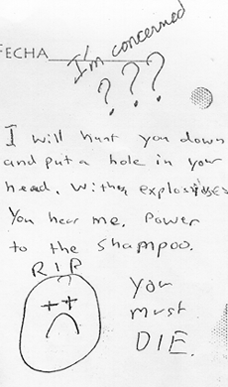
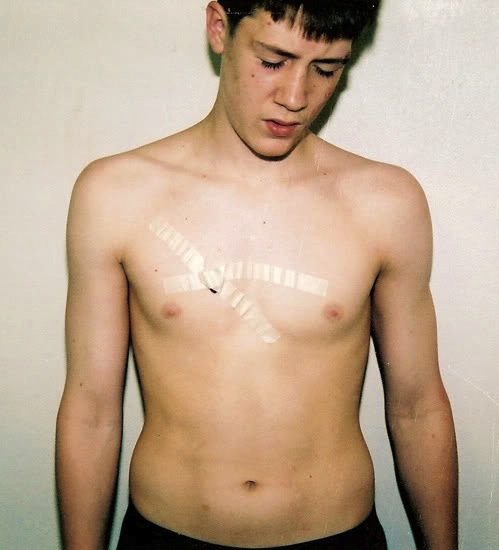
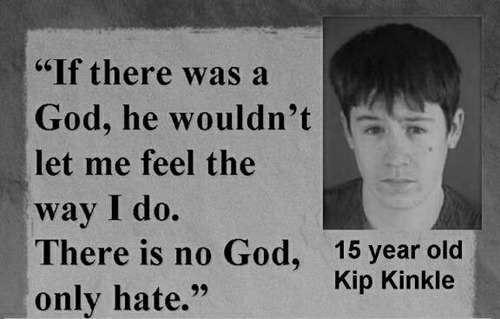





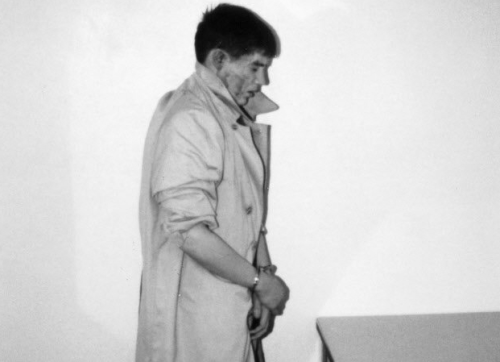
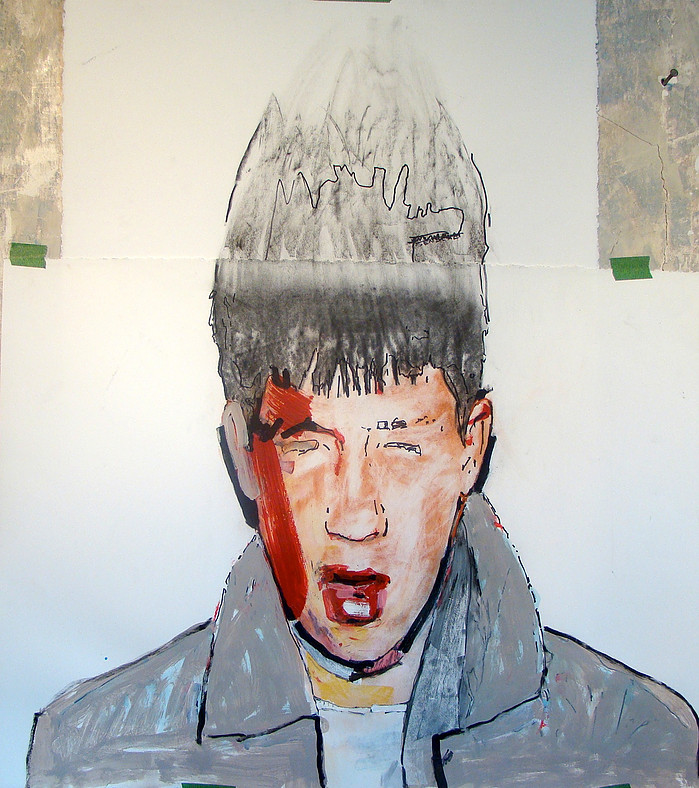
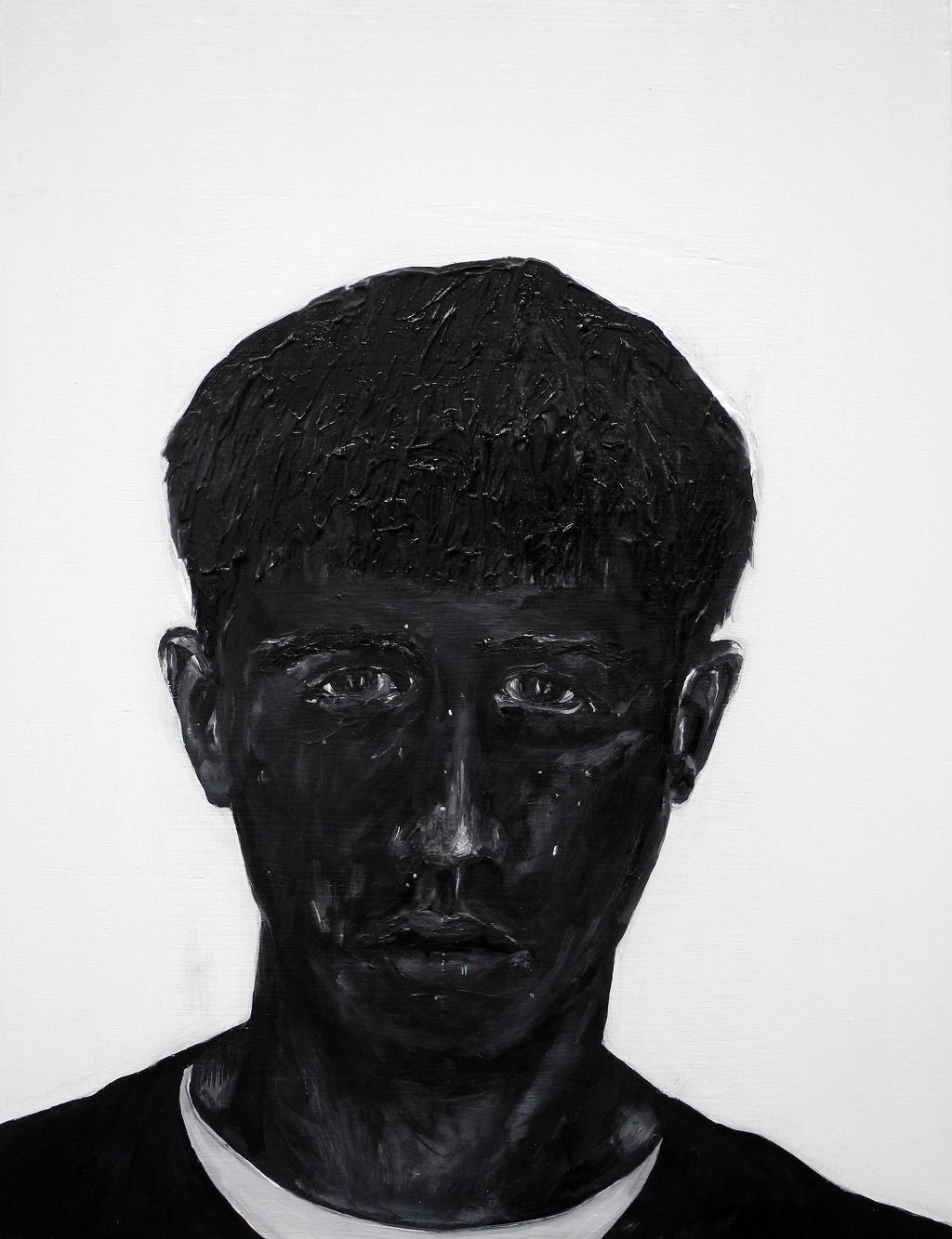
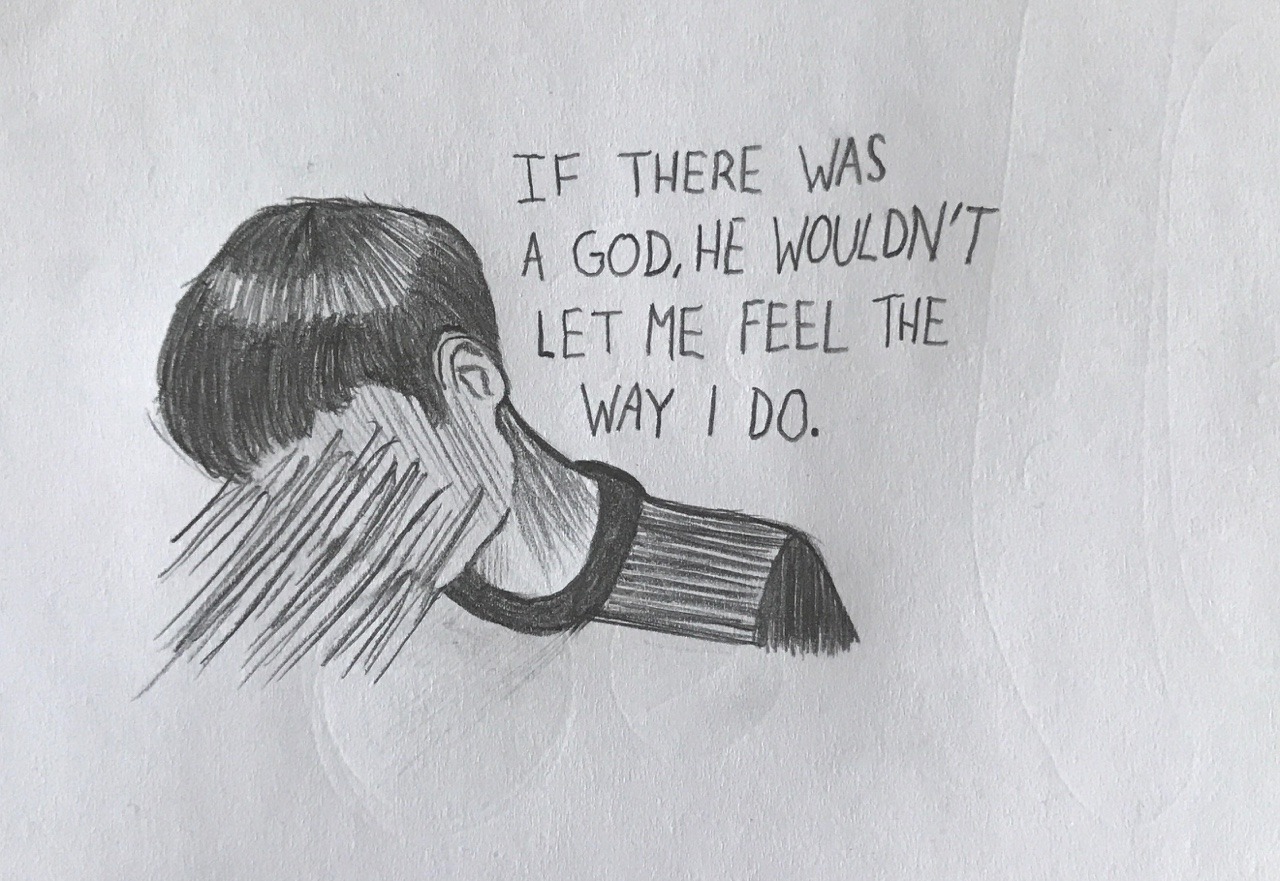
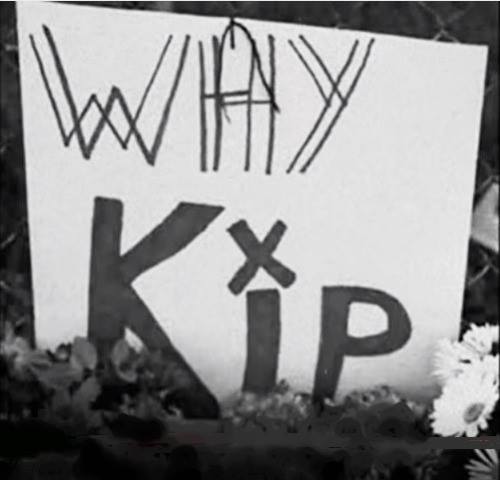
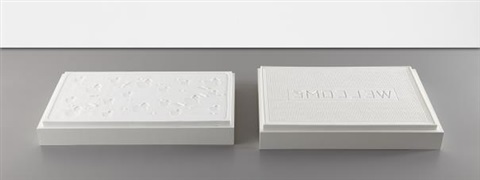
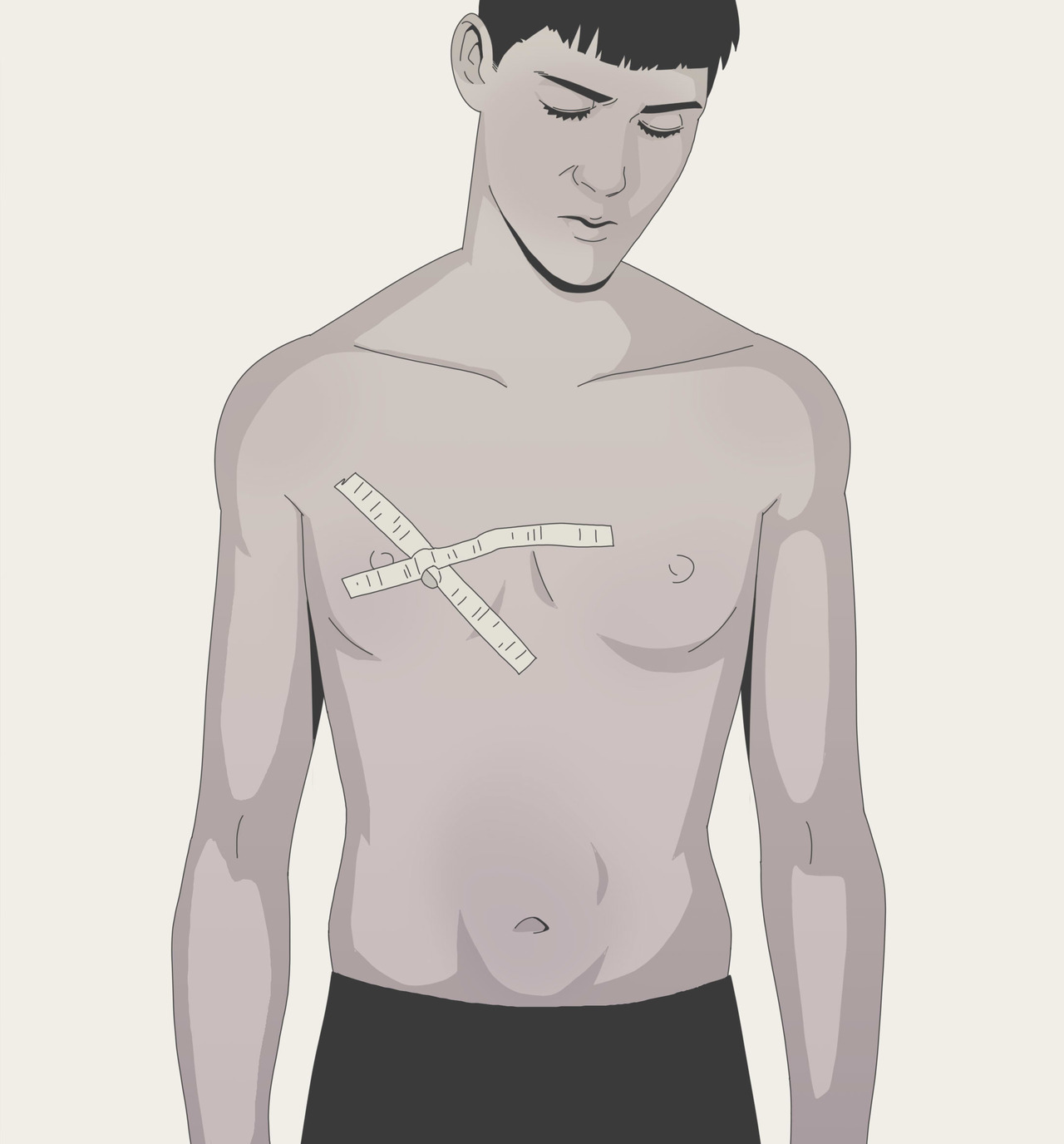
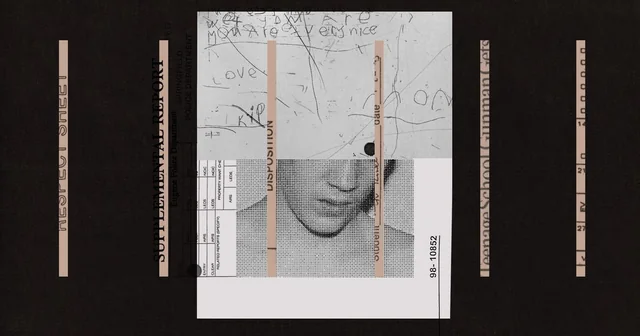
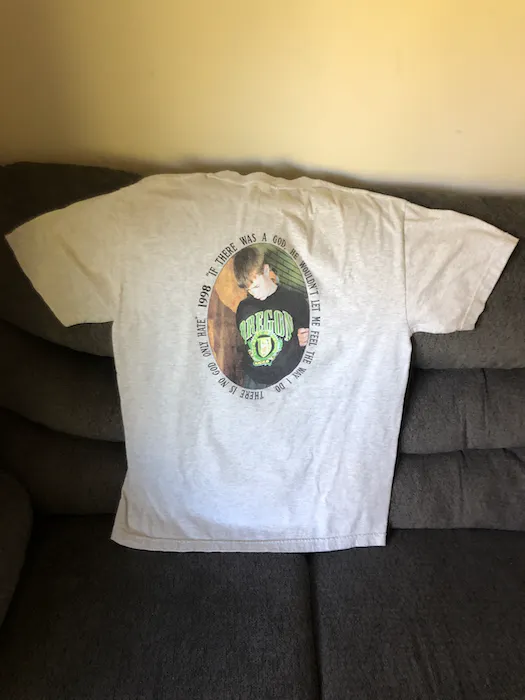
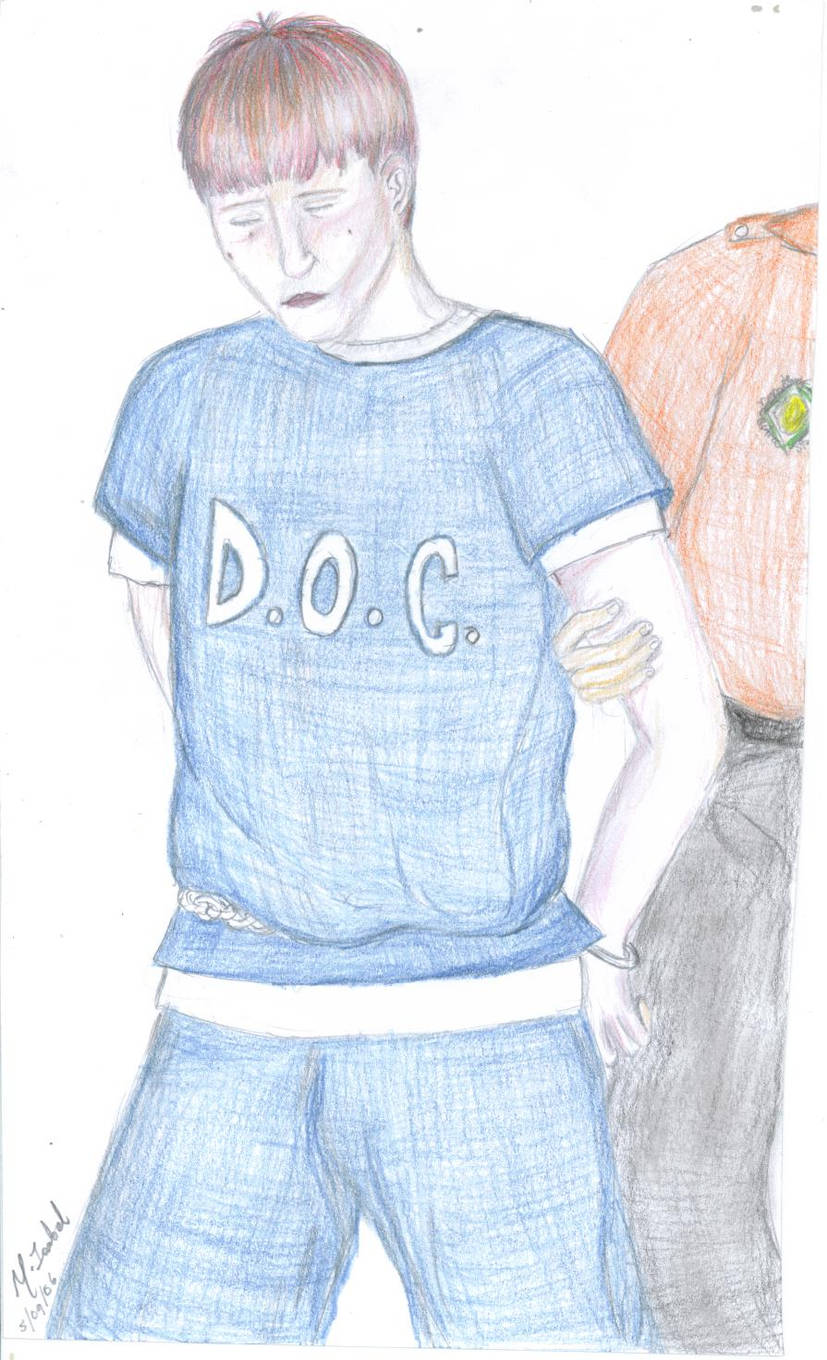

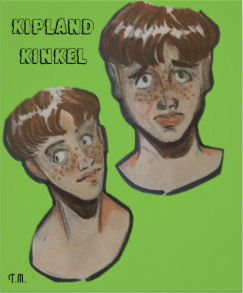

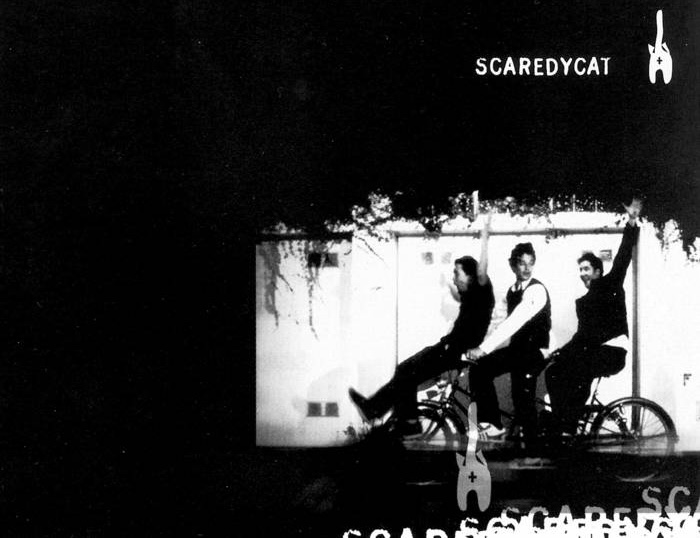






































 Now available in North America
Now available in North America 